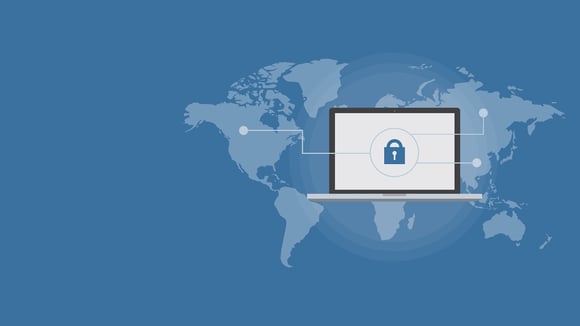With all the media attention as of late on security breaches, one of the top concerns we’re hearing from our client’s is the protection of sensitive data. DLP is a good solution for automatically protecting employees from accidentally compromising private information!
Why You Need a Data Loss Prevention (DLP) Solution
The number one way in which data is compromised is by people.
Whether accidentally or on purpose, employees are always the weakest link in the chain when it comes to leaking financial or personally identifiable information (PII).
This includes sensitive information such as credit card numbers, social security numbers, health records and more. With a good DLP solution in place, you can help to mitigate inevitable leaks.
How Does DLP Work?
DLP is both a process and a technology that automatically identifies, monitors and protects private and sensitive data when "in use" (like email) or "at rest" (like in the cloud or on your workstation or laptop.)
By creating a DLP policy, you identify the sensitive information you want protected, where it is located and how you want it protected.
The DLP software then goes to work, automatically blocking access to specific documents or blocking an email from being sent, as an example.
You can think of DLP as a data security policeman that keeps a watchful eye on your entire IT environment, detecting and preventing unauthorized use and transmission of sensitive information.
The Top 5 Reasons You Need DLP
Here are the top 5 reasons most companies should consider implementing DLP.
- Shadow IT is Rampant in Your Organization – If you aren’t sure where every piece of sensitive data is stored, transmitted, or accessed, you need to. DLP can provide you with a 360-degree view of data across the enterprise.
- Your Only Data Protection Strategy is Back Up and Recovery – While every single company absolutely needs a solid back-up and recovery strategy (DLP is not a substitute!) an ounce of prevention can be worth more than a pound of cure.
- A Data Breach Would Destroy You – Fines, bad publicity and brand tarnishing, legal action, and customer churn can bring down companies or at least impart significant damage. 60% of small companies that suffer an attack go out of business within six months.
- You Have Mobile and Remote Workers – Employees aren’t tied to an office desktop anymore. They are working on tablets, phones, and laptops on and off the corporate network. With complete endpoint monitoring, DLP technology prevents employees, third-party vendors, and contractors from intentionally or inadvertently leaking data.
- You Work in Highly Regulated Industries – From HIPAA in healthcare to FISMA in the federal sector, there are an abundance of regulations that you need to comply with or pay the price. DLP provides controls so that your company can feel confident in compliance.
How To Develop a DLP Strategy
There are a number of activities that should happen when initiating a DLP strategy. The framework below provides some high level guidelines that your DLP framework should follow.
- Prioritize your data. Determine which data would cause the biggest problem were it stolen.
- Categorize the data. Apply persistent classification tags to the data in order to track its use.
- Understand when data is most at risk. Data has varying degrees of risk based on its location, e.g. inside the firewall or on employee's remote devices.
- Monitor all data movement. Understanding how data is used and identifying existing behavior that puts data at risk are critically important.
- Communicate and develop controls. Create the controls for reducing data risk, and communicate them to the team. This may be simple at the beginning of a DLP initiative, by targeting the most common risky behaviors, and escalating later on.
- Train employees and provide continuous guidance. User training is critical, and will mitigate the risk of accidental data loss, aided by your DPL system.
- Roll Out. Data loss prevention is an ongoing process, not a single set of steps! Start small and expand as needed.
What DLP Solution is Right For Your Business?
Most organizations today use Microsoft 365 as their business collaboration platform. If this is the case, you may be in luck, depending on which version you have purchased.
If you have subscribed to Microsoft 365 Business Premium, you have access to a built-in DLP solution that you are already paying for, so you might as well take advantage of it!
By utilizing the data loss prevention (DLP) policy from Microsoft, you can:
- Identify sensitive information across many locations, such as Exchange Online, SharePoint Online, OneDrive for Business, and Microsoft Teams.
- Prevent the accidental sharing of sensitive information.
- Monitor and protect sensitive information in the desktop versions of Excel, PowerPoint, and Word.
- Help users learn how to stay compliant without interrupting their workflow.
- View DLP reports showing content that matches your organization's DLP policies.
DLP Best Practices
We recommend reaching out to a third party IT consultant if you don't have the in-house talent who has the skills - or the time - to do create a DLP strategy, implement it, and maintain it.
Please note that DLP on its own does not eliminate data loss risk completely. There are things that a DLP policy can not help you with, including:
- Accidental deletion or sharing of data, not labeled as sensitive
- Insider threats
- Incorrect migration
- Viruses
- Ransomware
The bottom line is, while DLP is important, a good IT security plan has many layers.
If you have not done so already, be sure to take a holistic look at your cyber security practices, along with your DLP implementation.
You may also want to watch the recording of our latest webinar, which explains all the built-in security features that are in Microsoft 365 Business Premium. Click on the image below to access the recording!




